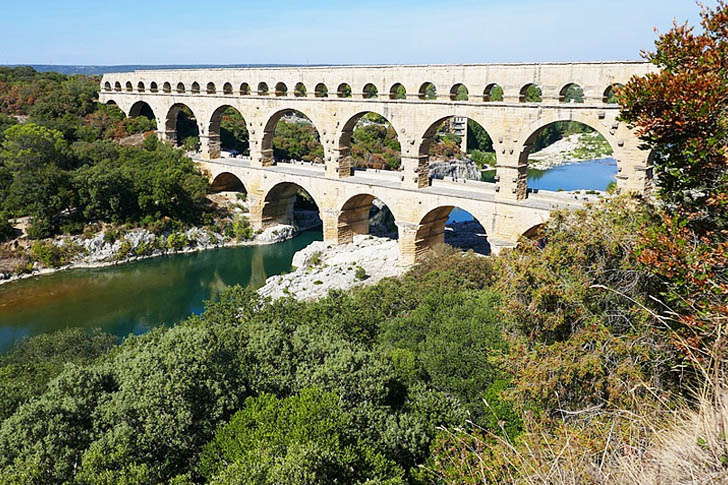Most travelers and those planning to travel are well aware of the Seven Wonders of the world, as they are the most traveled to, and some people credit the traveler that you are with the places you’ve been to. But there’s a lot to explore around the world. Some of the places are not listed as travel landmarks or tourist spots but are definitely wonderful places to go to and see for yourself.
These places are home to some of the most impressive architectural and engineered wonders in history. Don’t miss out on seeing them as they can also lead you to some of the well-preserved, unbelievable ancient cities and temples. Here we will feature 50 of these undiscovered wonders yet.
Dazu Rock Carvings
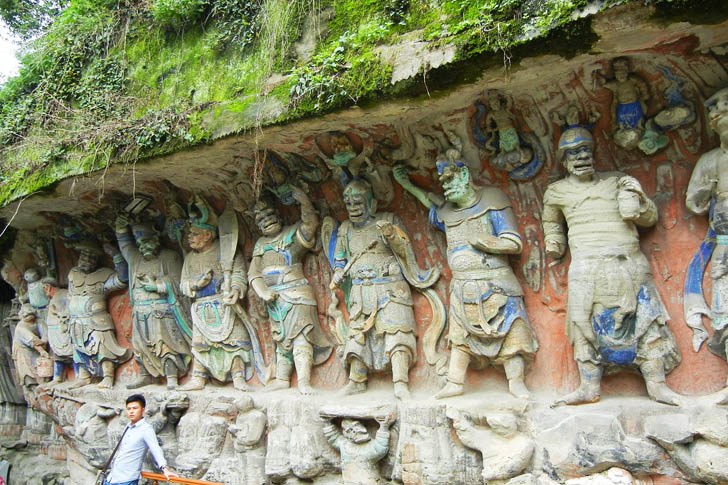
While most travelers book flights to Beijing and Shanghai, it’s also best to spend a day or more to check out the southwestern Chinese city of Chongqing. It is a place with a great collection of religious sculptures collectively called Dazu Rock Carvings, the sculptures date back as far as the seventh century and credit a mix of influences from Buddhism, Confucianism, and Taoism. It has 75 protected sites and about 50,000 statues where some are rock-cut cave shrines while some are carved into rock faces. All that makes the monument complex that is worth the visit to the south of China.
Aachen Cathedral
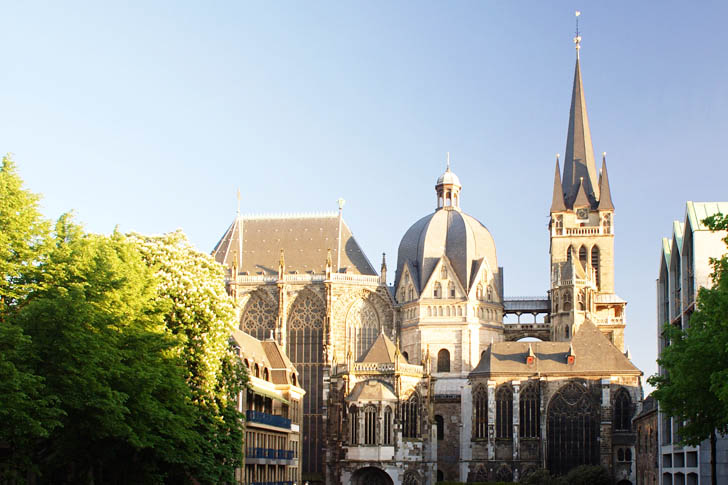
Built under the orders of Charlemagne or Charles the great of present-day western Germany, this cathedral stands as one of Europe’s oldest. Aachen Cathedral was consecrated in 805 and served as a coronation site of 31 kings and 12 queens of Germany from 936 through 1531. Buried here was the Holy Roman Emperor as well in 814, which is also another reason to visit this site. The whole building credits the Carolingian-Romanesque and Gothic styles, with a bit of Ottonian influence, that is worth seeing for those with more of a taste for architectural sites. The church’s interior is a must-see and it is detailed outside. For historians, the throne of Charlemagne can be quite a gem.
Gur-e-amir
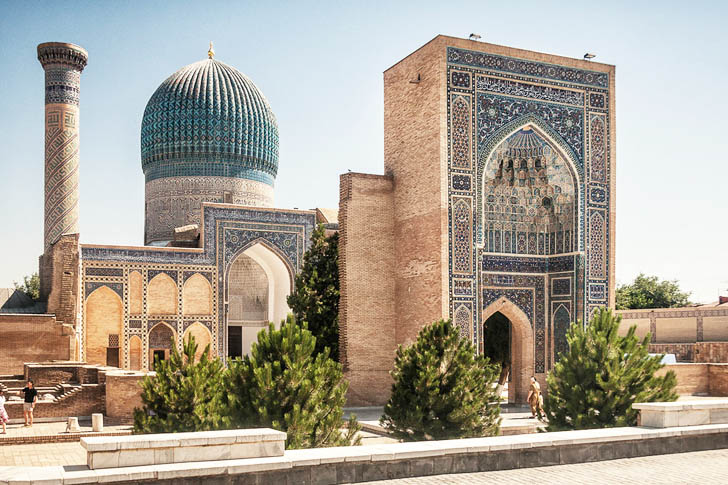
Gur-e-Amir is Persian and means ‘tomb of the king.’ This site is a jewel landmark of Samarkand in Uzbekistan. It is also referred to as the capital of Timur’s empire, and if you must know, he was the forefather of Babur who built the famous bucket list wonder that is well known for its notable Mughal architecture, The Taj Mahal. This temple doesn’t only feature the tomb of Timur but also that of his sons and grandsons. And, interesting, too, is the degree that he included his own teacher’s remains in the structure. The architectural wonder is characterized by a stunning large light-blue dome with intricate geometric patterns featured inside and out. The pretty wall is an ensemble of blue, light blue, and white beautiful tiled patterns.
Ajanta Caves
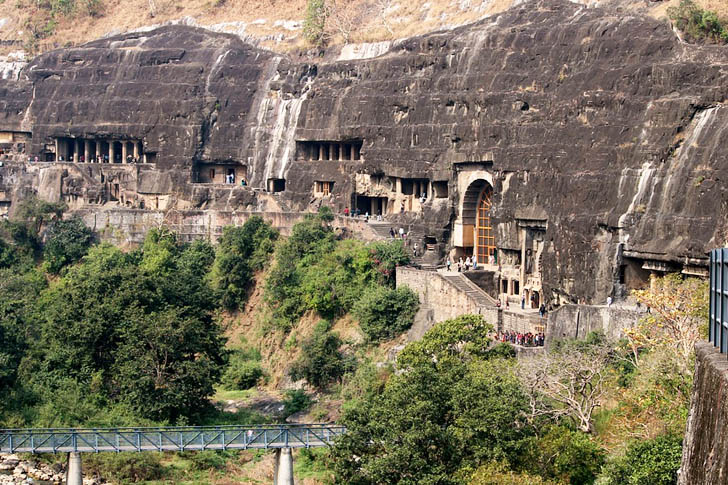
The Ajanta Caves is found in the Aurangabad district of Maharashtra, a western Indian state that features this breathtaking ancient Indian art. While these Indian arts have long spread across India, what is unique about this one is that it is found inside and part of about 30 rock-cut Buddhist cave monuments dating back to the second century B.C. through approximately 480 A.D. These are said to be ancient places of worship that have been turned into monasteries inside a 246-foot rock wall. Its structure is intricately cut and carved deep into the rock, and its interiors were decorated with paintings and carved images that, to some degree, influenced later religious artwork in India.
Ellora Caves
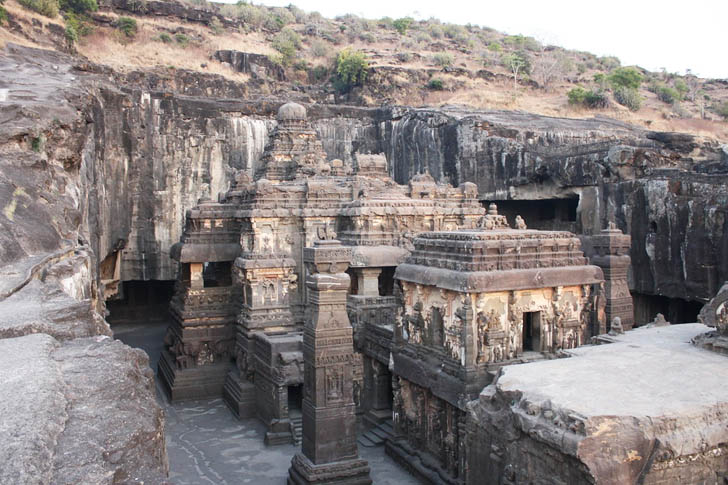
Another cave located at least 60 miles away Ajanta Caves is Ellora Caves that features yet again Indian artwork dating back to 600 through 1000. Although carved from a big rock, this has a more pronounced structure and credits a more picturesque exterior. It is said that there were many caves excavated from basalt cliffs (100 of them to be exact) and all featured religious artwork make up Hindu, Buddist, and even Jainist monuments. Of the 100 caves, only 43 were opened to the public. Although not featured as a top Indian tourist spot, this is one of the wonders worth exploring and marveling at.
Bagan Plains
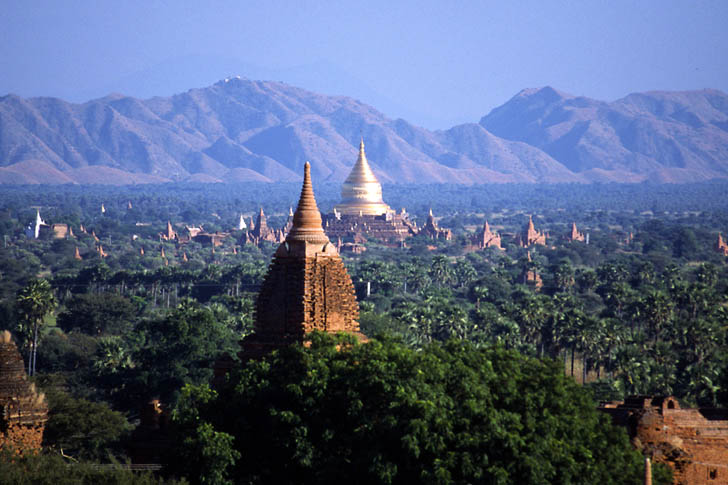
Bagan is an ancient city in the Mandalay Region of Burma and now one of the sites to see in modern Myanmar. This city was the thriving capital of the Pagan Kingdom back in the 9th to the 13th centuries and was home for more than 10,000 Buddhist temples, monasteries, and pagodas back in its glory days, which was between 11th to the 13th centuries. To some degree, it became the center for religious and secular studies. It was said that monks and scholars from India, Ceylon, and other parts came to Bagan to study prosody, phonology, grammar, astrology, alchemy, medicine, and law. Today, 2,200 of the religious structures still stand proving the glory it once held.
Casa Batlló
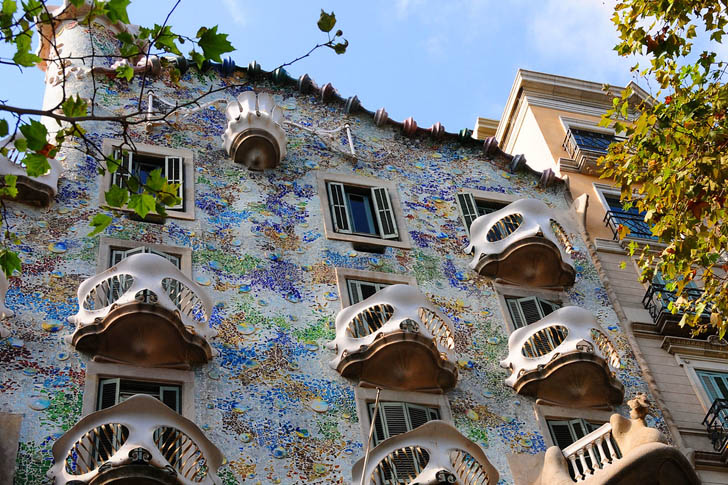
Another awe-inspiring destination in Barcelona, which greatly credits the Spanish architect Antoni Gaudí is the Casa Batlló. The place most tourists go to is Sagrada Família where they marvel at the still-unfinished work. However, if they make a slight detour to the center of the city, they’ll find this masterpiece of art by Gaudí. This is an old house, redesigned by the 19th-century architect back in 1904. Today, it is considered one of his masterpieces. It features irregular window works, a mosaic façade, an arched roof, and a unique lack of edges. Overall, it exhibits a skeleton-like structure, and it is locally known as the house of bones.
Petra
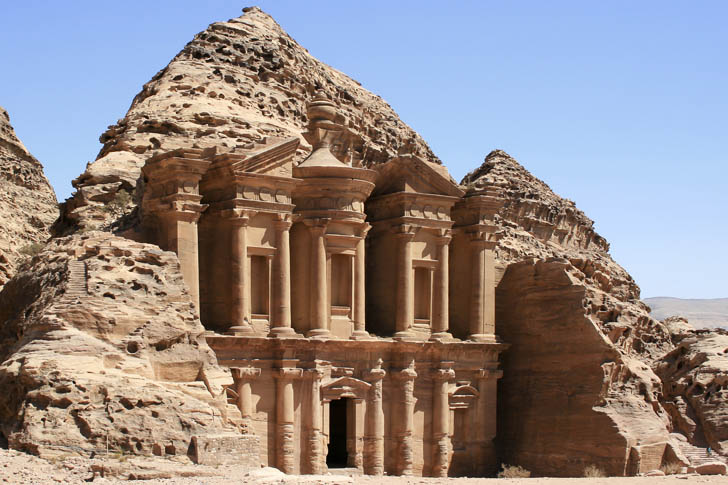
The ancient city of Petra is located in the southern part of Jordan, where its early settlement can be traced back to 7000 B.C. It was later established as the capital city of the Nabataean Kingdom in the fourth century B.C. Petra is famous for its impressive water conduit system and notable rock-cut architecture. It’s also called the Rose City because of the pinkish color of sandstone cliffs that were carved into buildings. In 1985, it was included as a UNESCO World Heritage Site and credited as one of the most precious cultural properties of man’s cultural heritage.
Great Pyramid of Cholula
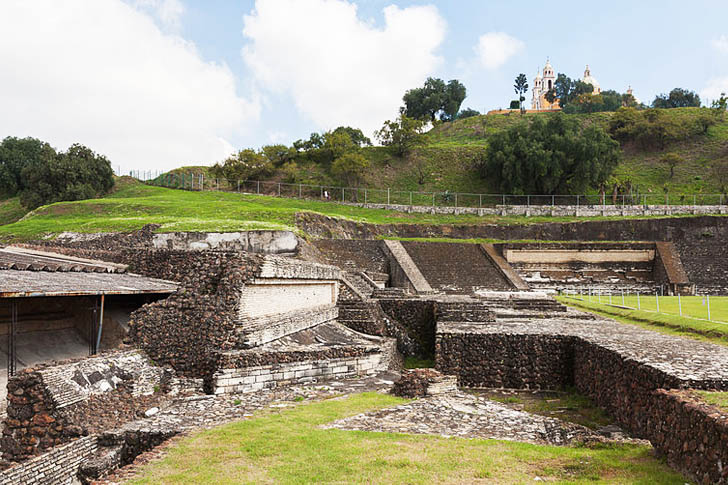
The Great Pyramid of Cholula is a complex that stands in Cholula, Puebla, Mexico. The huge pre-Hispanic step pyramid is also a temple that has been dedicated to the god Quetzalcoatl. Today, the pyramid measures 450 by 450 meters or in its final form, 1,480 feet by 1,480 feet. From afar it looks like a hill with a church on top of it, but it is credited as the largest pyramid in the West and also an important religious and mythical center in pre-hispanic times. Before the Spanish conquest, it is believed that the consecutive phases gradually built up the bulk.
Garuda Wisnu Kencana Statue
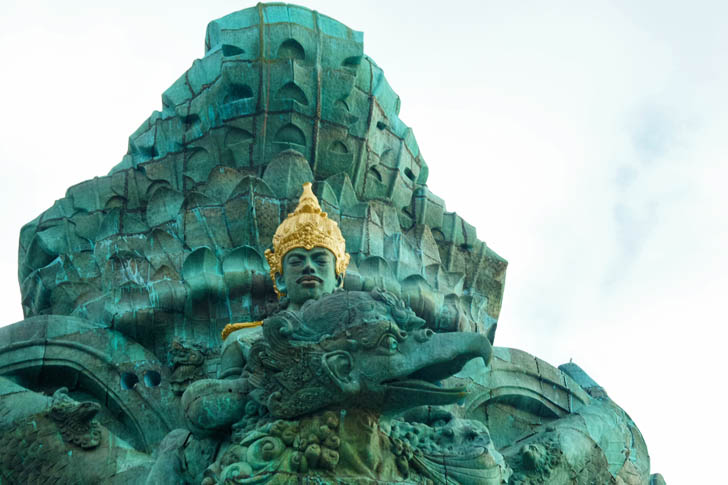
The Garuda Wisnu Kencana Statue is a 122-meter-tall statue in Indonesia that is located at the Kencana Cultural Park Bali. It currently measures 98 feet higher than the Statue of Liberty, and its design credits Nyoman Nuarta. The statue is actually Vishnu mounted up Garuda, who agreed to be ridden by the main Hindu god to search for the elixir of life or Amrita and be allowed to use it to liberate his enslaved mother. The statue was completed in July 2018, followed by its inauguration in September of the same year. All in all, the whole statue took 28 years and cost a total of $100 million to build.
Derinkuyu
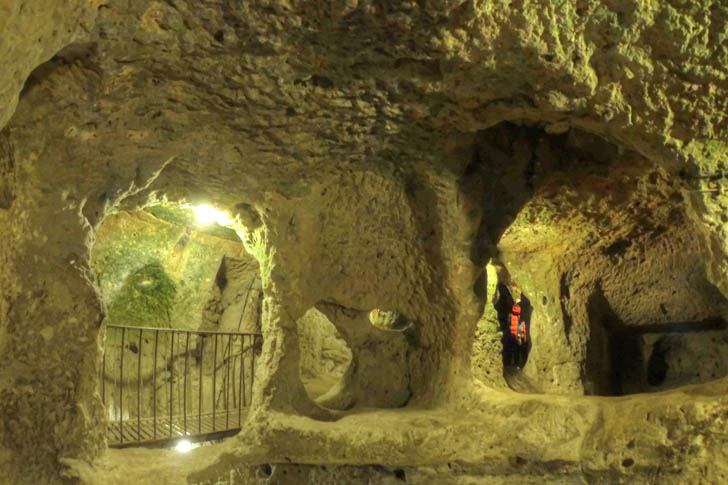
Derinkuyu is an underground city located under the Derinkuyu District in Turkey. It is located in the Cappadocia region of Turkey, where the hot air balloon ride is the ultimate bucket list experience; however, what you can find far below ground is amazing. The ancient underground city went 200 feet far down its flooring and was completed back during the Byzantine era, while some of the caves date far back as the eighth and seventh centuries B.C. The underground complex is so big and secured deep underneath that it could seal off itself with heavy stone doors from attackers and still shelter thousands of people inside along with livestock and food.
Banaue Rice Terraces
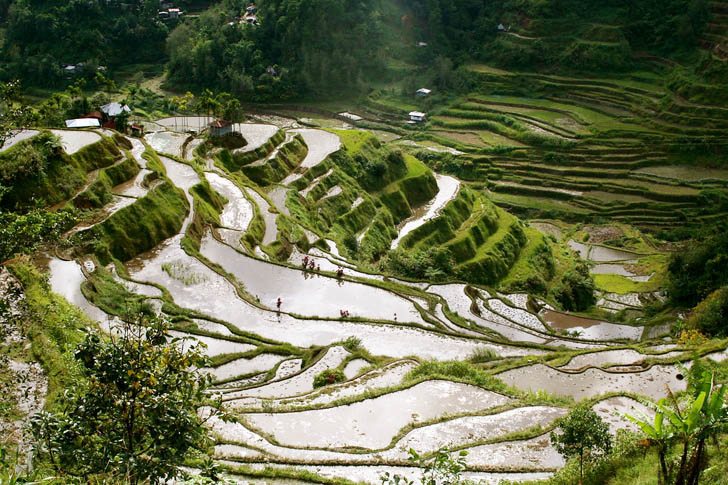
Located in the Philippines, this is another wonder of the world worth visiting to see the carved mountains to make rice terraces. The Banaue Rice Terraces were made by the hands of the ancestors of the indigenous Ifugao people. The rice terraces looked so out of this world with how the mountains were carved by hand. It also features a water irrigation system that credits the rainforests located just above the terraces. Until today, rice and vegetables are still planted and supply the majority of the country’s vegetation needs today. It is quite a wonder to think about how ancient people could actually think and work the way they did before.
Leptis Magna
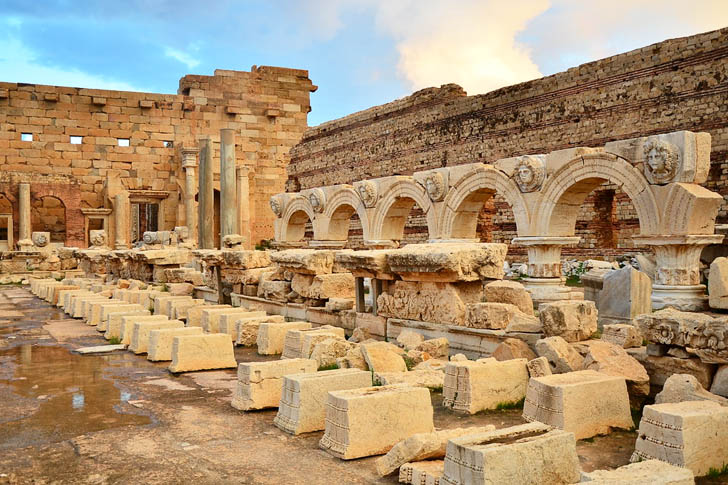
The ruins of Leptis Magna are actually the ruins of an ancient city that came under the Carthaginian Empire and Roman Libya. It is at the mouth of the Wadi Lebda in the Mediterranean and is located a little over 80 miles east of Tripoli in the city of Khoms, Libya. It is considered to be one of the best-preserved Roman sites to the degree that the ruins are like the once erected structures of Rome–the theater, the amphitheater, the marketplace, and the impressive triumphal Arch of Septimius Severus. The arch was named after the Roman emperor Leptis Magna native who commissioned it.
Great Buddha of Kamakura
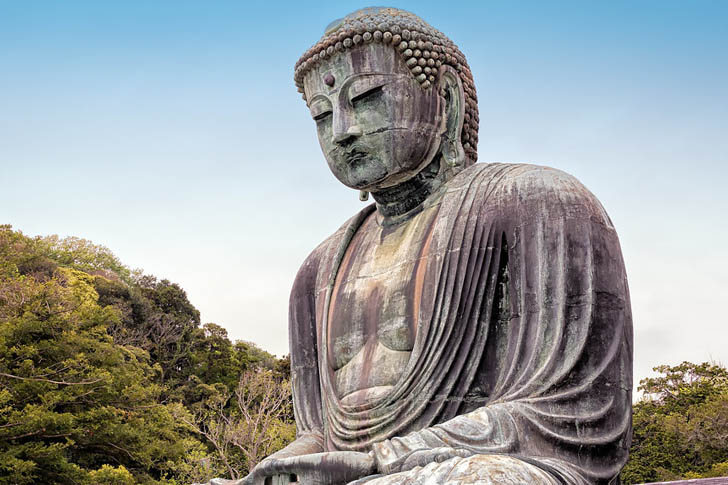
The Great Buddha of Kamakura is an iconic Japanese monument and is credited as the second tallest bronze Buddha statue in Japan. This bronze Amida Buddha stands on the ground of the Kōtoku-in Temple and is a Buddhist temple located in the city of Kamakura. This almost 44-foot-tall statue was cast in 1252 and was originally inside the temple hall; however, these halls were destroyed numerous times by disasters throughout the centuries. In the 15th century, they decided to let it stand in the open air. The monument is a 5-10 minutes walk from Hase Station and can be easily accessed from the third station from Kamakura along the Enoden railway line.
Humayun’s Tomb
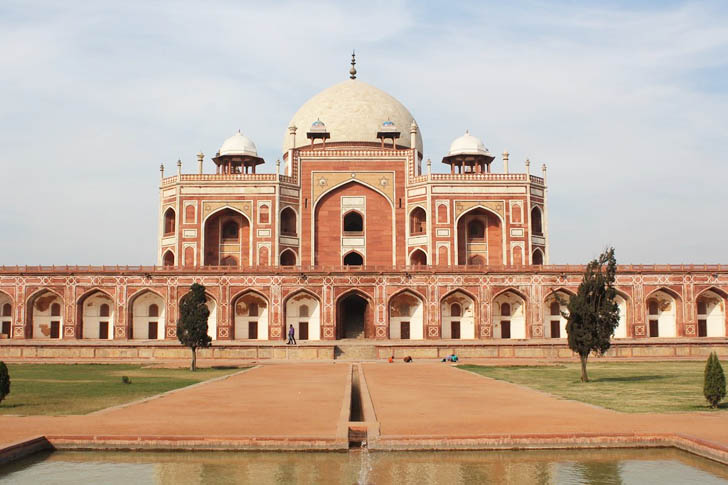
Modeled after Samarkand’s Gur-e-Amir, Humayun’s Tomb is a 16th-century tomb of the Mughal emperor and is located in the picturesque city of Delhi. Humayun’s Tomb credits Mughal architecture in that it is also greatly influenced, particularly by the royal mausolea Taj Mahal. The complex is impressively made of white marble and the red sandstone that characterizes Delhi Sultanate architecture and is also influenced by Central Asian and Persian styles. The structure also uniquely featured the Charbagh garden, which is typical of Persian gardens, which was never seen before in India. However, his father, Babur, was the first emperor to have been buried in a paradise garden in Afghanistan. This complex became home to the graves of multiple Mughal emperors and their royal family members after that.
Catherine Palace
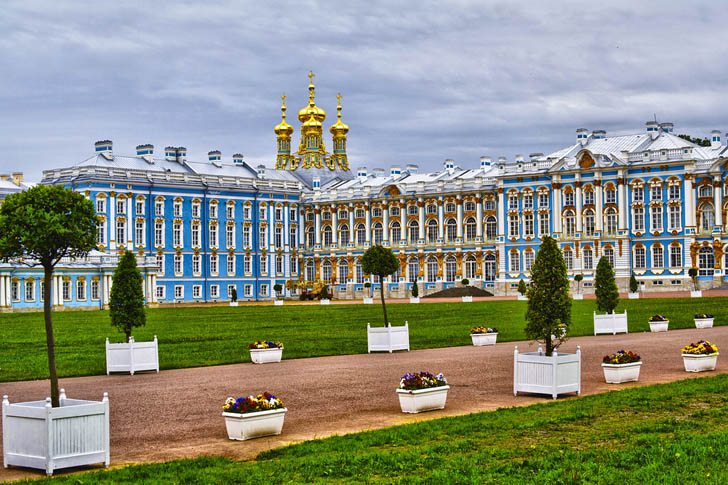
The Catherine Palace in Tsarskoye Selo is a journey of about 15 miles down south of St. Petersburg and is known to be the summer residence of the Russian tsars. This Rococo-style palace was originally built as a wooden house in the early 17th century and was soon replaced by a stone palace and soon redesigned and reconstructed further into the grand palace it is now. It is a work of art of some degree from the inside and out, from its opulently decorated halls, galleries, ballrooms, and an ostentatious exterior that contained about 220 pounds of gold used in its façade and in multiple statues on the roof. This palace’s architectural build marked the neoclassical architecture in the 1770s.
Sigiriya
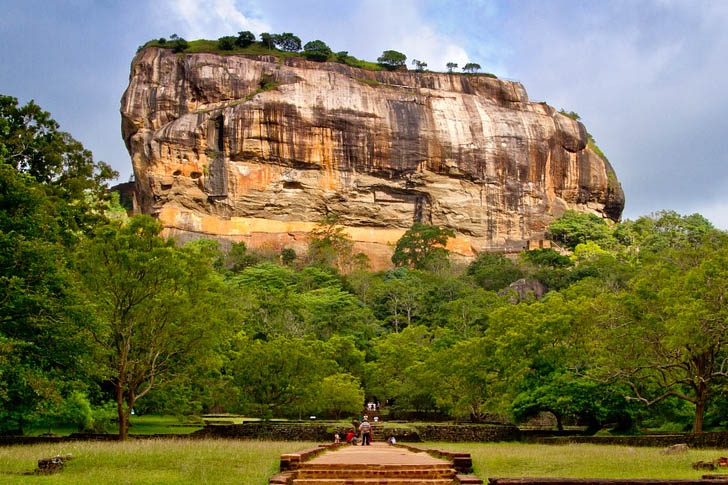
Sigiriya is an ancient fortress in Sri Lanka that was built on a 600 feet high pillar of rock in the late fifth century. This royal palace was well-built on top of the rock and was heavily protected by a giant lion-like structure at the gateway halfway up the side. However, the site now lies in ruins atop the very same rock it was built, with the remnant parts of the great paws and steps of the lion gate. The degree of this ancient fortress’s greatness can only be imagined from what remains of it.
Genghis Khan Equestrian Statue
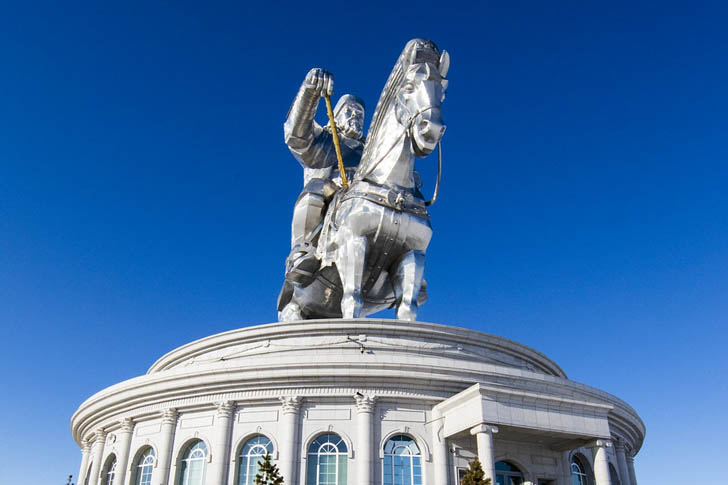
The Genghis Khan Equestrian Statue is part of a complex and is the statue of Genghis Khan on horseback at the Tuul River Bank at Tsonjin Boldog. The complex also marks the legend where it is believed that he found a golden whip. His statue is also facing eastward, where they say it faces towards his birthplace. Mongolia is truly a destination worth visiting to see monuments like this. Visitors would even go to such a degree that they’d walk to the statue’s head through its chest and neck to get a panoramic view of the surrounding areas.
Blue Mosque
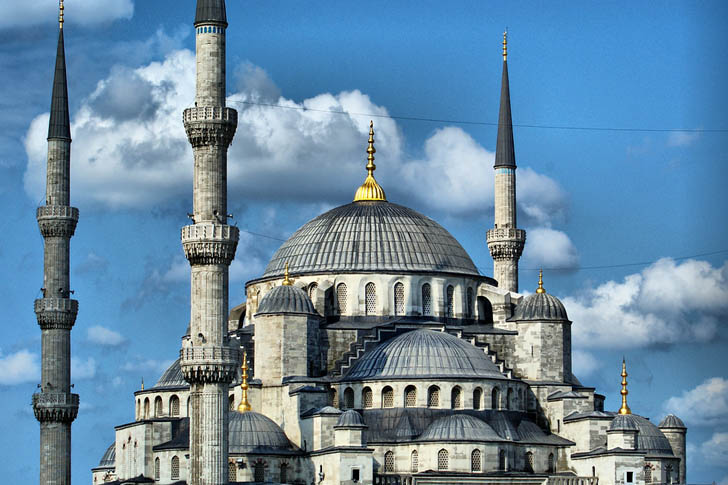
Best known as the Blue Mosque is a 17th-century Sultan Ahmed Mosque found in Istanbul. It is often overshadowed by the nearby Hagia Sophia as it is more globally recognized as a must-see tourist spot, but this mosque is definitely a stunning view one shouldn’t miss. This mosque is credited to be the last great mosque built in the classical period of Ottoman architecture. It features five main domes, eight secondary domes, and six minarets, and it also features stained glass windows, 200 of them at least. The secret to this blue mosque is its hand-painted blue tiles that make up the exterior, which further light with blue lights under the night sky.
Villa d’Este
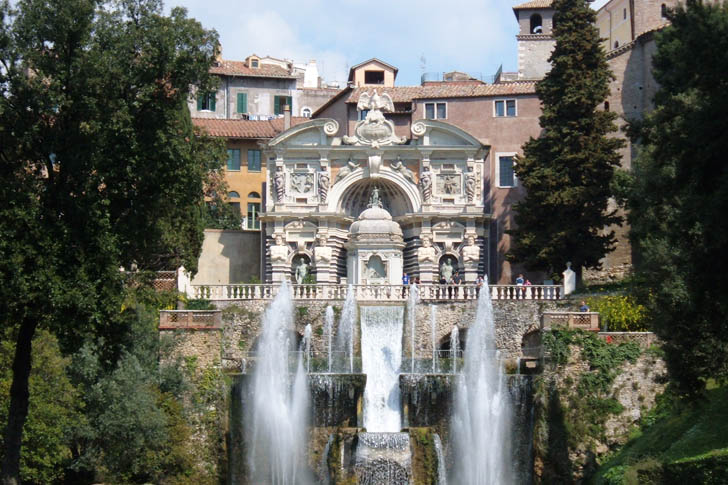
No, this is not the hotel with the same name at Lake Como but is the Villa d’Este dating back to the romantic 16th-century and located in the town just outside of Rome called Tivoli. Today, this villa serves as an Italian state museum and showcases the Italian Renaissance garden to such an absolute picturesque degree. It is also famous for the profusion of fountains that it features. The frantic work of this project was spearheaded by Ippolito II d’Este who, although worked as a religious leader of the Roman Catholic Church, came from the prominent family of Este and was a long collector of antiques and the arts.
Chand Baori
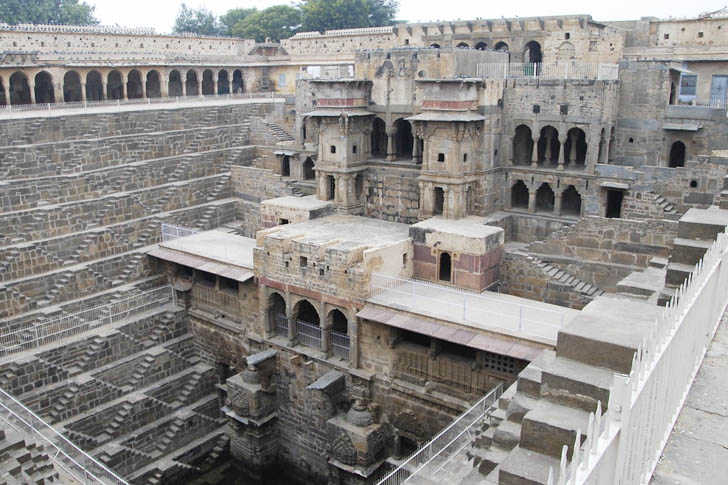
Chand Baori is a stepwell of 3,500 narrow steps that make up 13 stories and descends 100 feet to the ground. It is located in the Rajasthani village of Abhaneri and is a sight to see for all. This structure was built to provide a steady source of water in the region, but for its purpose, it became far too meaningful that the place became known historically as a gathering place for the community, especially in times of intense heat. The air at the bottom of the well gets to about 5 to 6 degrees cooler than the air at its surface, making it an ideal place during the hot season.
Meteora
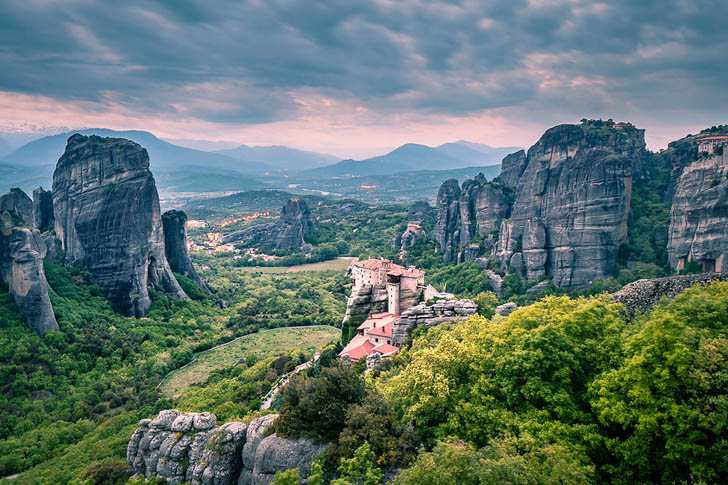
Located in central Greece is a rock formation that is credited to be the largest and steepest built complexes of Eastern Orthodox monasteries in the world. They call the place Meteora and it is absolutely worth the visit just to get a surreal experience of the complex. This type of rock formation and process happens in other places all over the world, but what makes Meteora different from all the rest is the uniformity of the sedimentary rock–they are constituents that were deposited over millions of years. It is said that the earliest documentation of the place was made by monks. Of the original 24 monasteries, only six remains, and they are perched as high as 1,200 feet on top of huge rounded boulders.
Szeged Synagogue
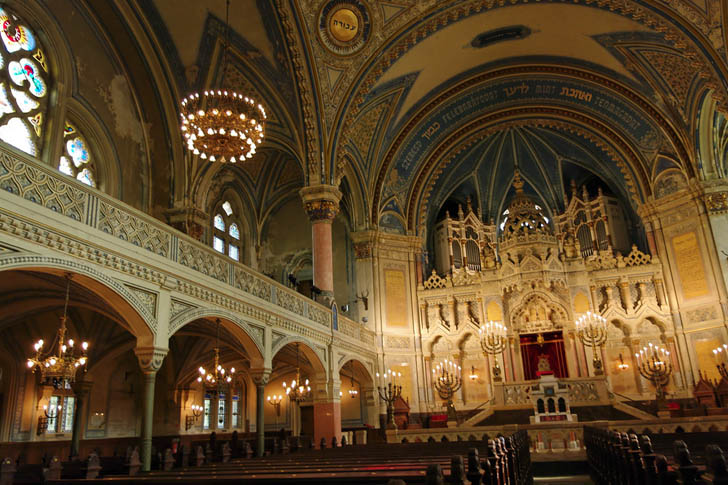
Szeged Synagogue is located in the city of Szeged in the southern part of Hungary. It was built back in 1907 at the time of Art Nouveau and Moorish Revival, making up the historical architectural styles and blending it with Gothic and Roman influences for the interior. The doom ceiling of the synagogue is 159 feet tall from its flooring and it also features stained glass to decorate the windows. The decors are the work of art of Miksa Roth. Also worth noting is that this synagogue is the second largest in Hungary and the fourth largest in the world. Definitely a must-see!
Wat Rong Khun
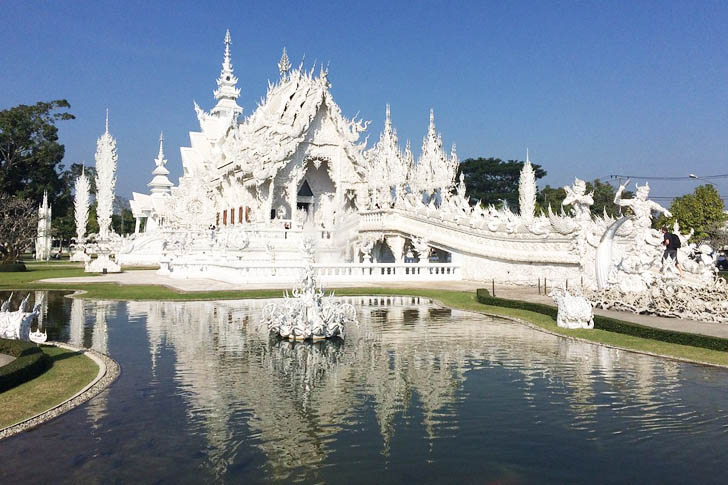
Wat Rong Khun is a privately owned gallery located in the northern part of the Thai province of Chiang Rai. However, the style of its architectural build resembles that of a Buddhist temple. This structure is commonly known to foreign tourists as The White Temple since 1997 back when the local artist Chalermchai Kositpipat had decided to redesign and rebuild the original temple and turned it into a center of meditation and learning. Until today, there is an ongoing construction that is expected to finish by 2070. Today, Buddhist symbolism of all sorts can be seen. They are jaw-dropping, from the flooring to walls, to the statue carvings and buildings.
Tikal
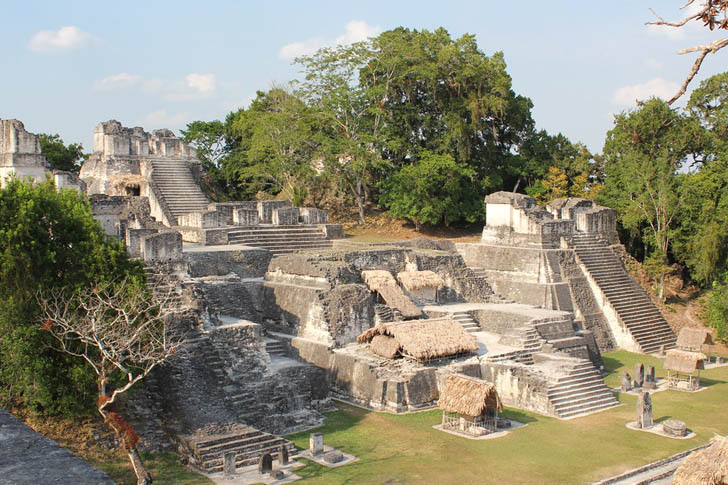
The Tikal ruins were discovered in northern Guatemala in the 1840s. It also, to this day, remains as one of the best-kept travel secrets of the Americas. Historians believed that the place used to be called Yax Mutal back in its prime, signifying that the ancient city was built around 400 to 300 B.C. Today it is credited to be one of the largest archaeological sites and centers that feat the ancient Maya civilization. Tikal also shows pieces of evidence of temples that stood more than 230 feet high, as well as ruins of large palaces and also smaller residences. Interestingly, pyramids, administrative buildings, and stone monuments were also found.
Karakoram Highway
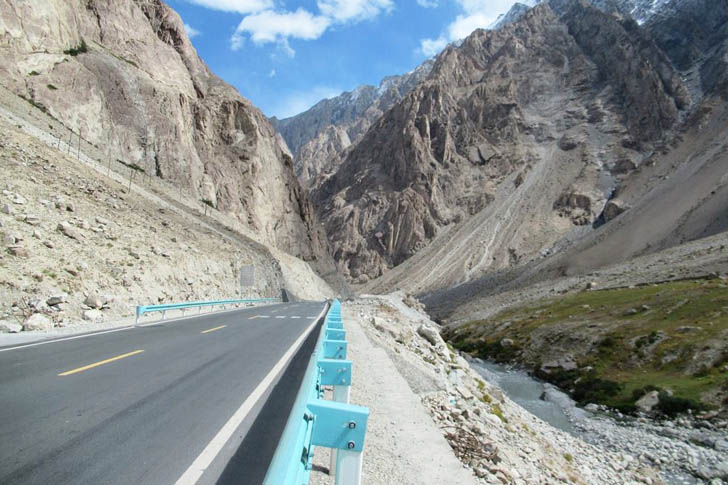
Karakoram Highway is one of the world’s highest paved roads and must be experienced by trekking in northern Pakistan. It is a historic road leading into the northern end of China, where it then becomes China National Highway 314. It is also part of the famous Silk Road and travels through gorgeous mountain towns such as Skardu, Gilgit, and Abbottabad. Another travel feature of the highway is passing through the photogenic landscape of Hunza Valley that credits the local attraction of the region. This road is often referred to as the 8th wonder of the world due to the elevation and difficulty of its construction.
Canterbury Cathedral
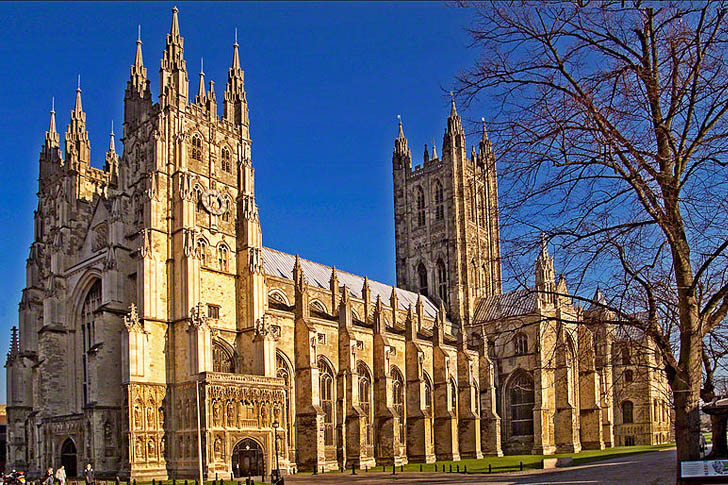
Canterbury Cathedral is the Seat of the Archbishop of Canterbury, currently Justin Welby, the leader of the Church of England. It is credited to be one of the oldest structures in England, founded in 597 but only reconstructed and consecrated in 1070 and underwent numerous alterations since. It is famous worldwide not only for its significance in Christian history but also because of the Romanesque and Gothic styles of the structure and its interior. The cathedral features the 21 bells in its three towers and is easily the city’s most picturesque attraction. Today, it is formally referred to as the Cathedral and Metropolitical Church of Christ at Canterbury.
Virupaksha Temple
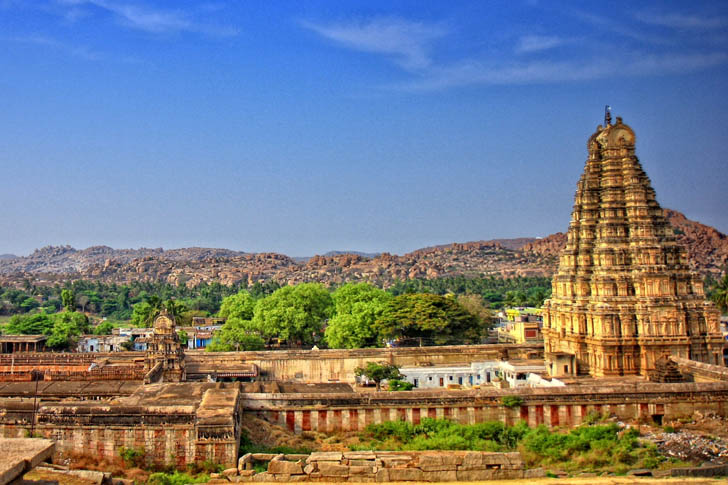
The Virupaksha Temple is a sight to see in the Ballari district of Karnataka, India. It is part of the Hampi group of monuments and was built back in the seventh century dedicated to Lord Virupaksha, who is an avatar of Shiva, the main Hindu deity. The town where the temple is located was actually the capital of the Vijayanagara Empire that ruled the region at that time. Lakkan Dandesha, a chieftain under the empire’s rule, credits the temple’s wonderful make. It is definitely a place that all tourists should go visit and see. Today, it continues to be a site visited by pilgrims and tourists during various festivals.
Leshan Giant Buddha
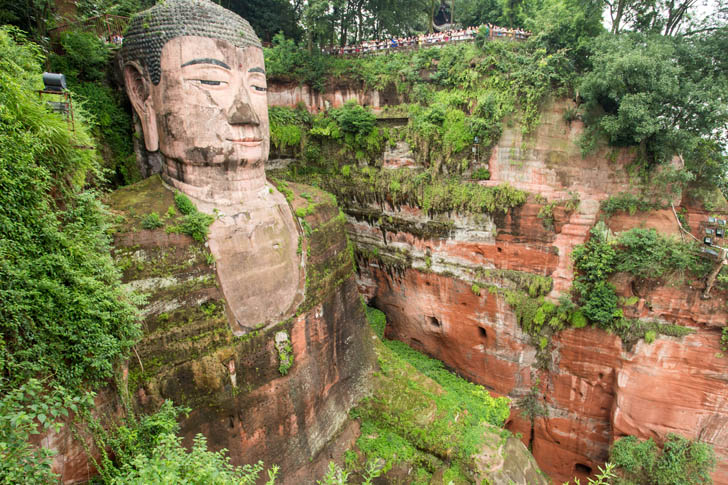
Leshan Giant Buddha is a 71-meter tall stone statue of Maitreya Buddha and was built between 713 and 803 near the city of Leshan, Sichuan province of China. This statue is a sight to see and is popular not only for the imagery but also for its carvings made out of a Cretaceous red bed sandstone cliff face. The sculpture sits facing Mount Emei, which is one of the Four Sacred Buddhist Mountains of China. It also credits a must-see scenic view because of the Min and Dadu rivers flowing underneath the sculpture. It’s so stunning you’d think it’s unreal.
Newgrange
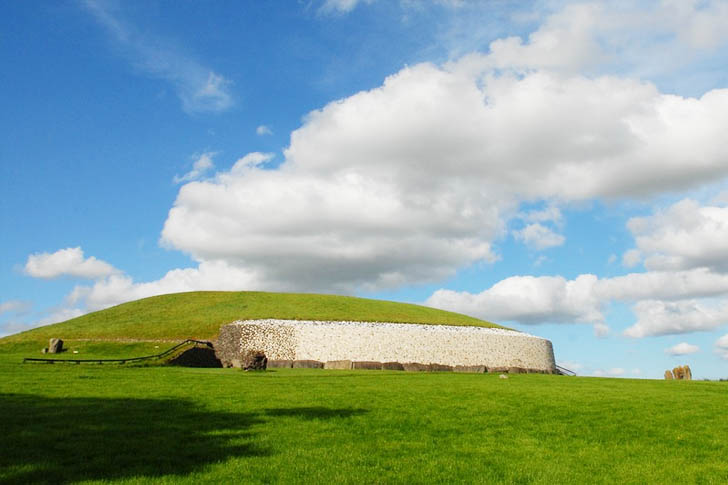
A prehistoric monument sits in one of the most magical spots in County Meath, Ireland. Newgrange, a Neolithic monument, dates back to about 3200 B.C. and is wrapped in mystery up to this day. It is thought to be a grand passage tomb in a circular form with nearly 280 feet wide at its widest point. The monument also features an inner stone passageway and chambers that contain human bones, and some items on its flooring were thought to be grave goods and votive offerings. It may be that Newgrange was home for the Gaelic gods by referring to the Irish folklore. Whatever it is though, it is worth to wander in the area and see it yourself.
Great Mosque of Djenné
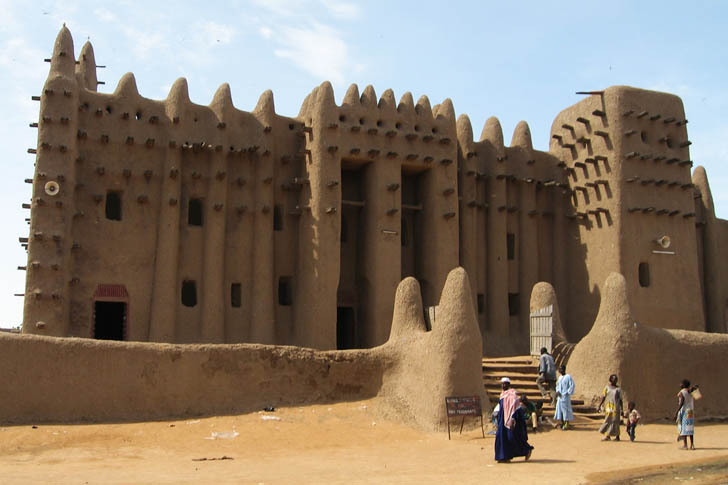
The Great Mosque of Djenne is definitely a must-see structure that credits the Sudano-Sahelian architectural style of native West Africa. It was built in central Mali back in 1907, in which the adobe structure was inspired by the original mosque built on the same site in the 13th century. Aside from being the center of the Djenne community, it is also one of Africa’s famous landmarks. So if you are considering traveling to Africa, a side trip in between jungles, this site is worth your side tour. To get a better feel of the place, it’s good to consider scheduling the trip in time for the fairly sought-after festival being held there each year.
Himeji Castle
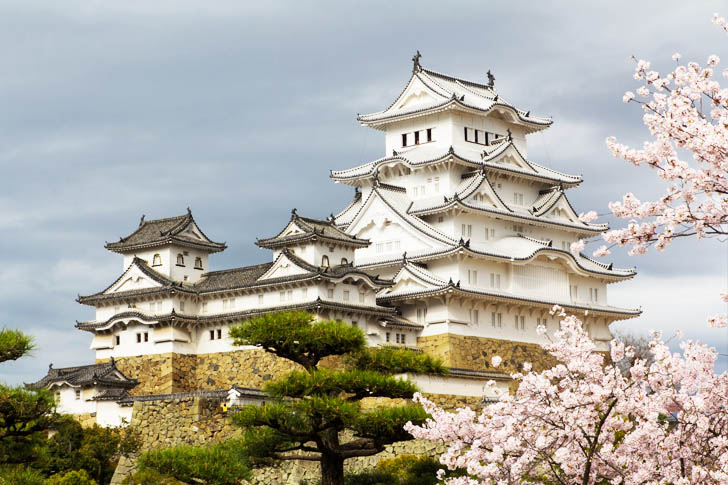
Credited to be the largest castle in Japan, this castle is named after the city where it was built during the 14th century. The complex sits on a hilltop location and features 83 buildings of classic Japanese architecture and a breathtaking Japanese garden. What makes this place even more stunning are the cherry blossoms that bloom in spring – making it the ideal destination in spring. The castle is commonly referred to as Hokuro-jo, meaning White Egret Castle because of its white exterior and the structure’s brilliance of resembling a bird in flight. Definitely, a must-see when you travel to Japan next spring.
The Motherland Calls
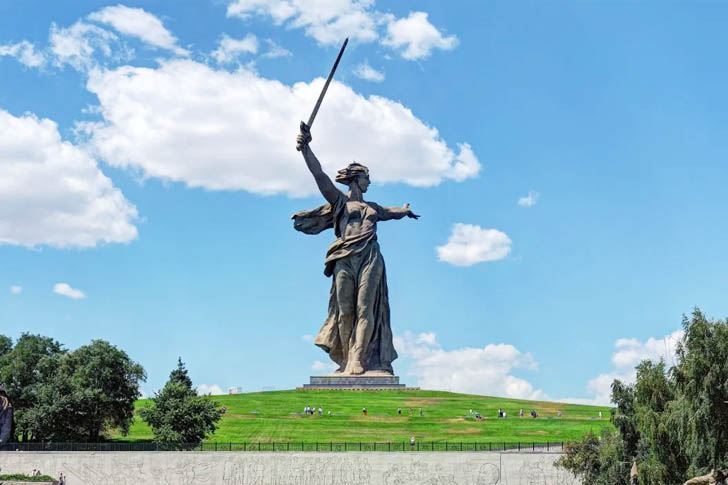
Standing at the center of the complex are Heroes of the Battle of Stalingrad in the form of a statue called The Motherland Calls. The complex is located in the Russian city of Volgograd, which was also formerly known as Stalingrad. The figure statue is credited to be the tallest in Europe and the tallest woman statue in the world apart from its pedestal. The statue of a woman stepping forward with her sword raised in the air as she beckons those behind depicts how the motherland calls on her sons and daughters to continuously fight the enemy. Unveiled in 1967 to commemorate World War II’s largest battle, the 200 steps leading up to the statue also symbolized the 200 days of battle the nation endured.
Kumbhalgarh Fort
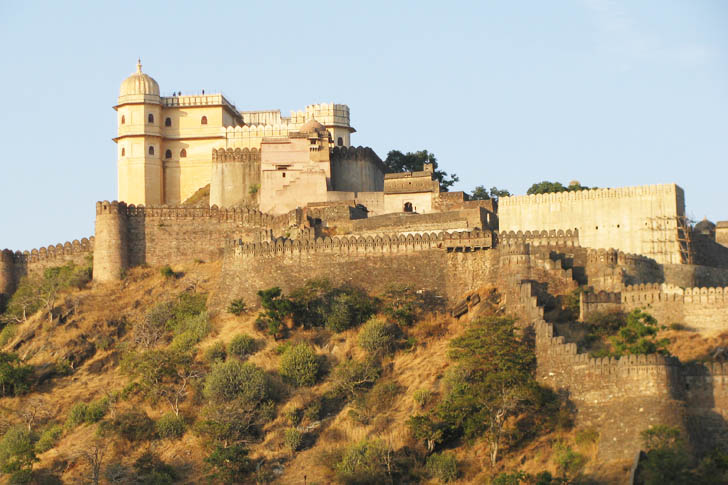
After the Great Wall of China, the second-longest continuous wall in the world is the wall of Kumbhalgarh Fort. It stretches for more than 23 miles, and the fortress is located in the Aravalli Hills of Rajasthan state. The Walls were built in the 15th century and remained occupied up until the late 19th century. With the fort now open to the public, it gives one, to some degree, a spectacular view at night due to its added light set-up feature that is lit for a few minutes each night. Also, the walls feature 360 temples, with more found inside the fort.
Temple of Bacchus
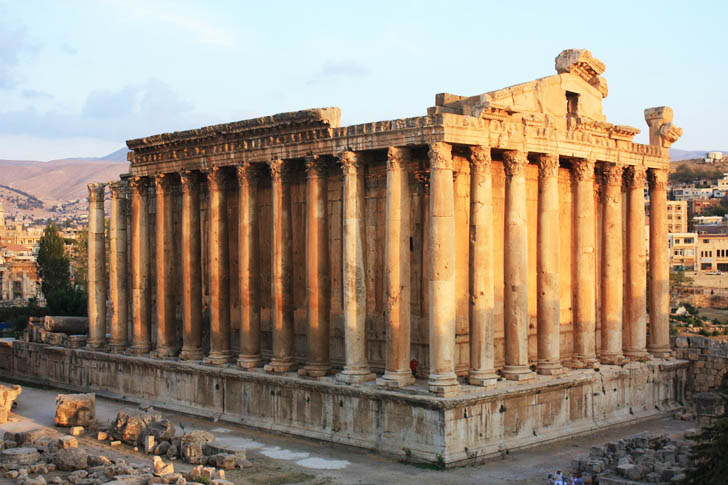
The Temple of Bacchus takes credit for being one of the grandest and well-preserved Roman temple ruins in the world. It was said to have been built back in the late second or early third century A.D. The Temple is also part of the Baalbek temple complex, also located in the ancient city in present-day Lebanon. It stands 101 feet tall, 114 feet wide, and 216 feet long, and is definitely a must-see place because it is an archeological and artistic site that showcases Imperial Roman Architecture. The temple is also known for its fine ornamentation.
Potala Palace
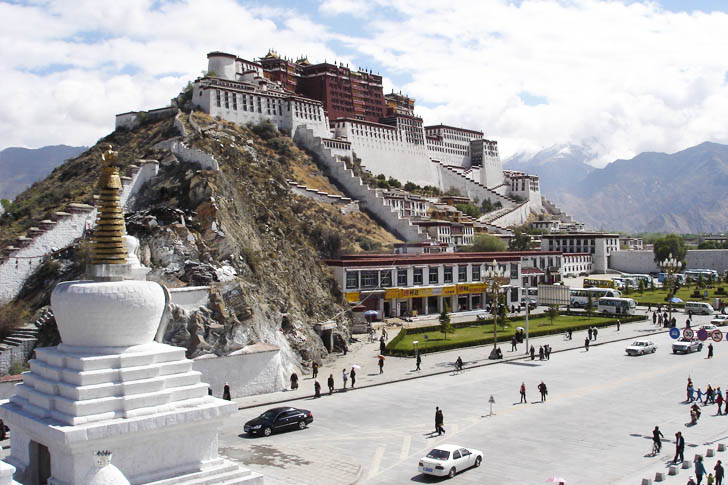
As a result of the Chinese invasion of Tibet back in 1959, the present Dalai Lama fled to India and left the Potala Palace, which has been their home since the late 17th century. The palace is located in Lhasa, which is Tibet’s capital. The palace takes credit for its stunning view of the side of a mountain and stands 13 stories tall with more than 1,000 rooms and 10,000 shrines – not bad for a fortress during that time. They named the palace after the mythical abode of bodhisattva Avalokitesyara, Mount Potalaka. The old city of Lhasa, where the Potala Palace is located, is definitely worth a visit if only to learn the beautiful and political stories it has.
Shah Mosque
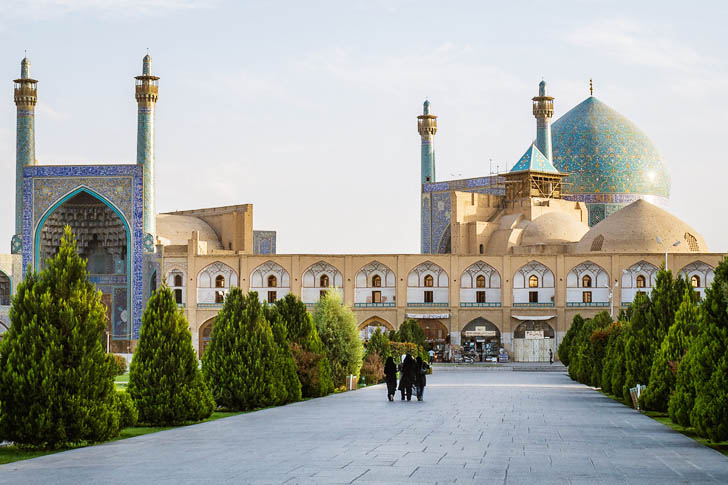
Built by the fifth Safavid king of Iran, Abbas I of Persia, The Shah Mosque in Isfahan, Iran, was completed in the early 17th century. It takes credit for being a great example of Persian architecture. It stands handsome and beautiful, displaying seven-color mosaic tiles and calligraphic inscription designs that completely make up its interior. It is quite a sight that Iran is proud of, and this royal mosque is prominently featured in the Iranian 20,000 rials banknote. So the next time you head to the middle east, do stop by, explore the city, and appreciate this beauty!
Great Buddha of Thailand

There’s more to see in beautiful Thailand, such as The Great Buddha of Thailand, which is located at the Wat Muang temple, at the heart of the Thai province of Ang Thong. The Buddha is a 300-foot-tall, 210-foot-wide statue of the Buddha and is seated in a posture called the Maravijaya Attitude. With the degree of work needed to be done to finish the Great Buddha statue, it took the builders 18 years before they were able to finish the figure in 2008. It is made of concrete and has been painted in gold. Today, it is referred to as the tallest statue in Thailand and the second tallest in Southeast Asia.
Virgin of El Panecillo
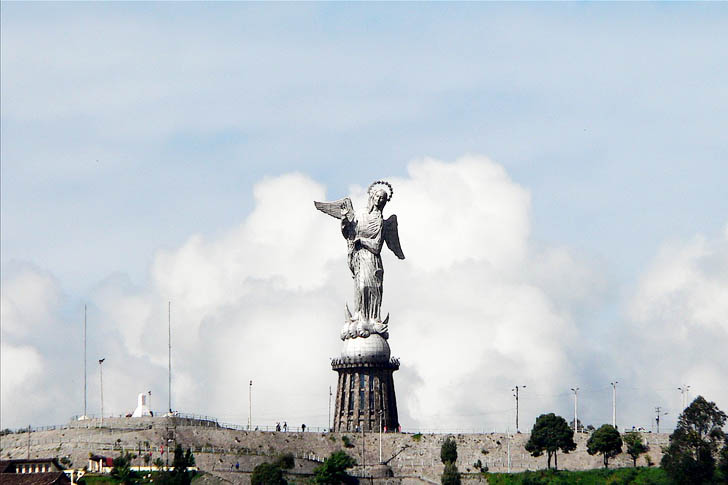
The Ecuadorian capital of Quito has stood on top of the hill of El Panecillo, the Virgin of Panecillo. The site is credited to be the world’s tallest aluminum statue that’s made of aluminum. Created by the Spanish sculptor Agustín de la Herrán Matorras in 1975, the statue is said to represent the Woman of the Apocalypse as featured in the Bible. Also, it features a twist in the depiction of the Woman standing on top of a globe, with its halo of stars and wings. Today, it is referred to as the tallest aluminum statue in the world.
Wat Chaiwatthanaram
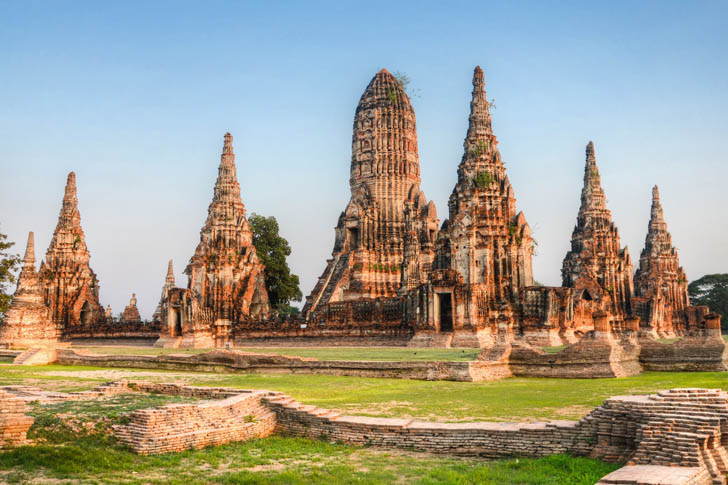
Located in the ruins of the old Thai city of Ayutthaya is a 17th-century Buddhist temple, Wat Chaiwatthanaram. It features the architectural style of Khom, which was popular during that era. The Prang or the central spire of the structure stands at 115 feet tall and is surrounded by eight chapels. In 1766 the temple lost much of its former glory after the Burmese army destroyed the city. However, restoration of its structure, including the flooring and roofing began in 1987 until it was once again reopened to the public in 1992. This site is definitely worth a visit when in Thailand.
Rila Monastery
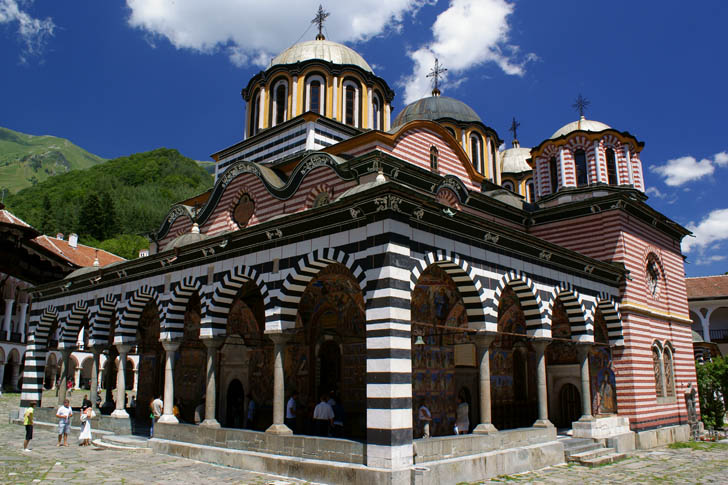
In the Rila Mountains of southwestern Bulgaria, there is a monastery there that takes credit for having such an incredible view. Built in 927, the Monastery of Saint Ivan of Rila is home to about 60 monks. The monastery is named after the hermit Ivan of Rila, who is the founder of the monastery. It is considered to be one of the best historical and architectural monuments in Bulgaria and is quite the tourist attraction in the south of Europe. This place is so significant, it made it featured in the 1 lev banknote, released in 1999. It is also the largest and most famous Eastern Orthodox monastery in Bulgaria.
Borobudur
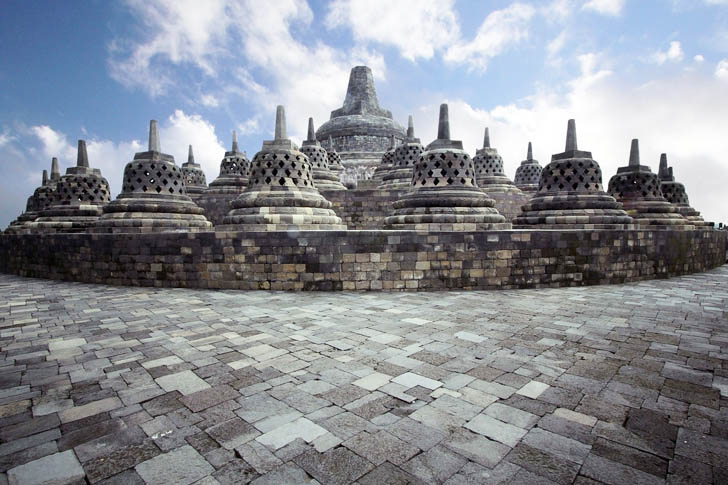
Located in Indonesia, the world’s largest Muslim populated country, is Borobudur, the largest Buddhist temple. Standing tall, with a central dome at the top, six square platforms, and three circular ones at the heart of Java City, Magelang, Borobudur is not only a Javanese Buddhist architectural site to see but also houses 2,672 reliefs and 504 Buddha statues. The central dome alone hosts and is surrounded by 72 Buddha statues. The complex takes credit as one of the oldest, ninth-century temples dedicated to Mahayana Buddhism. It was built during the reign of the Sailendra Dynasty. Going to this spot may be a religious requirement to some, but as a tourist, going to places like this helps you appreciate the culture. Plus the structure alone is worth the visit.
Pont du Gard
Also worth visiting in France is this first century A.D. ancient Roman aqueduct commonly known as the Pont du Gard. History suggests that sometime in the 6th century, this structure may have gone out of service and eventually became a toll bridge as it takes credit as the highest elevated Roman aqueduct. It is also the best-preserved. The aqueduct crosses the Gardon River, which is located very near Vers-Pont-du-Gard, a southern French town. The aqueduct was built for the main purpose of bringing water to the city of Nîmes. Pont du Gard stands 160 feet tall with three tiers of arches. It is a testament to Rome’s ingenuity.
Church of the Transfiguration
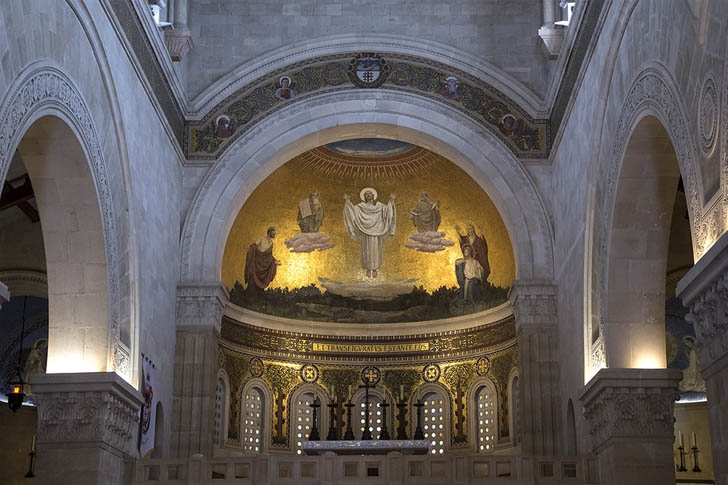
When you’re in Israel, there’s a historical Franciscan church located in Mount Tabor, Kizhi Island, at the center of Lake Onega, which is worth a visit and the side trip. The Church of the Transfiguration, other than being known as an 18th-century wooden church structure of such grandeur, is also historically credited to be the site where Christ’s transfiguration took place. In the bible, however, it was an unnamed mountain where Jesus had the encounter and spoke with Moses and Elijah. Anyhow, this church is popular among the locals and it stands 120 feet in height, as well as hosts 22 domes. Since the structure keeps no heating system, it has been customary to hold services only during summer. So it’s best to plan your trip around that time.
Wazir Khan Mosque
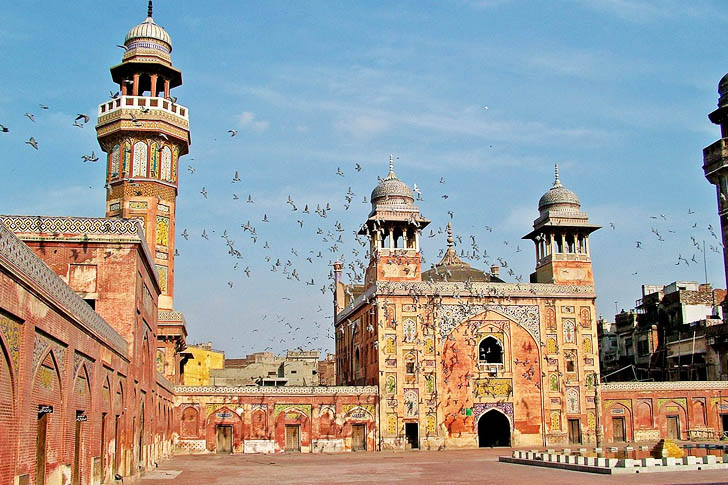
The Wazir Khan Mosque located in Lahore, Pakistan takes credit for being the most intricately designed mosque of the Mughal Era. It is known for its impressive tile work called Kashi-Kari. It was also commissioned by the same Mughal emperor, Shah Jahan, who commanded the building of the Taj Mahal. The construction of the mosque began in 1634 C.E. and was completed in 1641. The mosque is built in the second most populous city and has always been widely known for its colorful Persian-style. Mughal frescoes and Punjabi artwork cover the whole interior of the Wazir Khan Mosque while the prayer room has a touch of Arabic and Persian calligraphy inside, situated within a 31-foot-tall dome. Truly, it is a place built to keep one’s focus on prayer.
Lord Murugan Statue
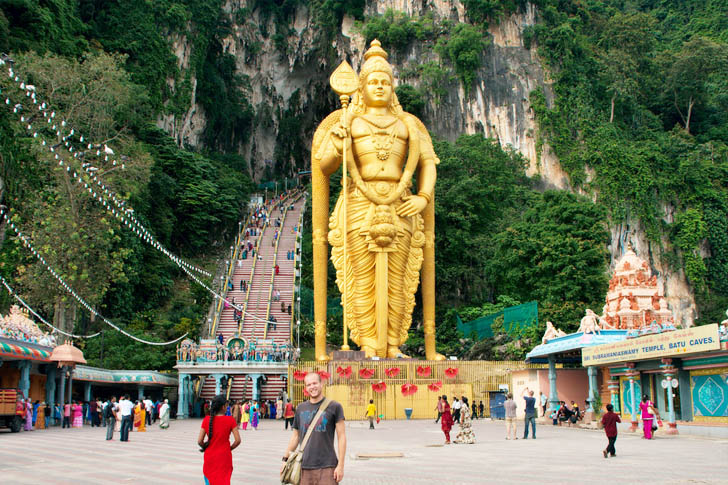
Whenever you’re in Malaysia, Lord Murugan Statue is also a must-see spot for you to visit as it takes credit for being the tallest statue in the country. It is also Hindu’s third tallest statue in the world. It stands at the foot of the Batu Caves, where a popular shrine called Tamil, which is dedicated to the Hindu god of war, Murugan, is also located. The statue is 140 feet tall and is made of 1,550 cubic meters of concrete, as well as 350 tons of steel bars. 300 liters of gold paint were used by 15 Indian sculptors to complete the work which lasted over three years. The hard work was all paid off upon recognition of the statue as part of the list of undiscovered wonders in the world. And that’s a proud feat for something that was released in 2006.
Christ the King
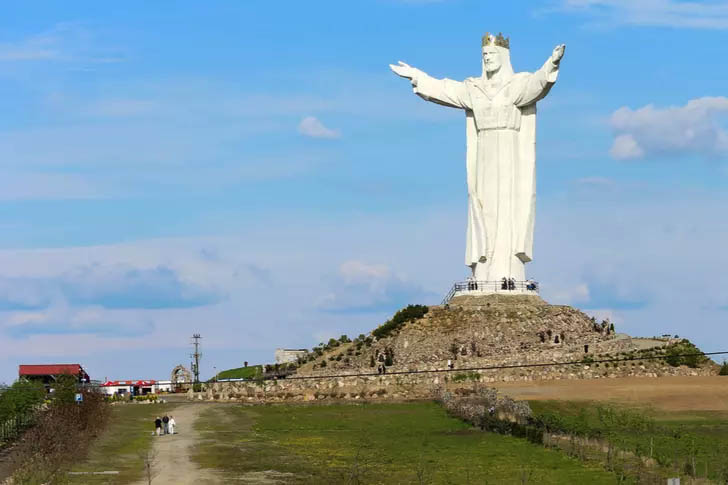
The Statue, Christ the Redeemer, in Rio de Janeiro may be more famous, but did you know that Christ the King in Poland takes the credit of being the tallest statue of Jesus in the world? Poland’s Christ the King statue stands 33 meters (108 feet) tall and represents Jesus’ age when he died at the cross. If one included the statue’s crown and mount it would stand at the height of 172 feet. The sculpture took five years of construction work, and it was only in 2010 when it was unveiled and presented in the town of Swiebodzin, Poland. Definitely, a must-visit in Poland and truly a meaningful one to some.
Khajuraho Group of Monuments
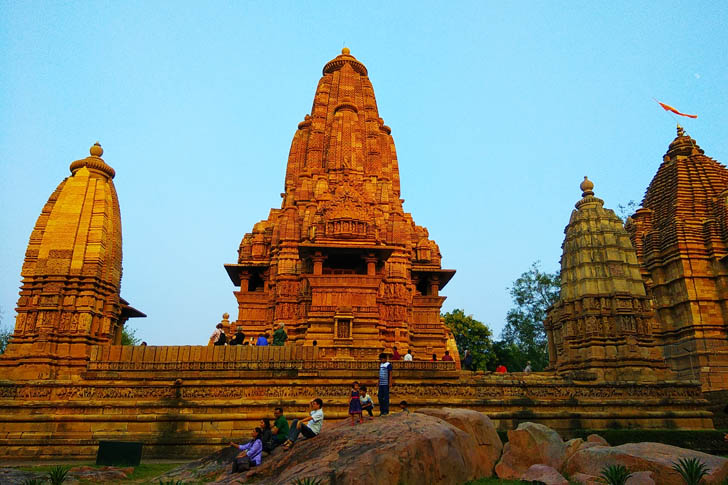
If you’re near the Indian city of Chhatarpur, it’ll be a big miss if you don’t make the trip to see the Khajuraho Group of Monuments. This group of Hindu and Jain temples located at the heart of the city is officially known as such, and it takes credit as a prime example of Nagara architecture. The exterior is impressively covered with intricately carved statues, most of which were built between 950 and 1050. History records show that 85 temples existed back in the 12th century, and of that number, only 25 stands stable and strong today.
Library of Celsus
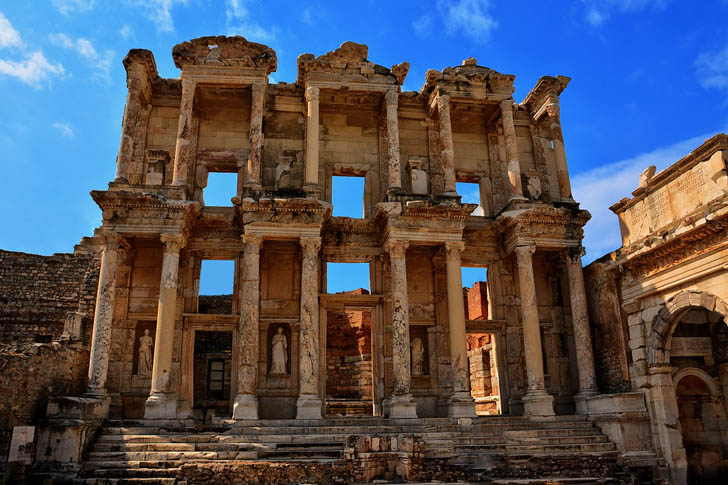
You wouldn’t think there’d be a place like this in Turkey, but there is! The Library of Celsus is an ancient Roman Library that takes credit as the third-largest ancient library. It was built in the Anatolian city of Ephesus–which is what the place was called in ancient Roman times. Today, it still stands after having been destroyed in the 11th century. It is located in what is now called the city of Selçuk, western Turkey. The library was built to honor the Roman Senator Tiberius Julius Celsus Polemaenus in the 2nd Century A. D., and it was said to have served as the place where at least 12,000 scrolls were stored. After its reconstruction in the 1970s, it is now one of the most breathtaking sights in Turkey.
Alhambra
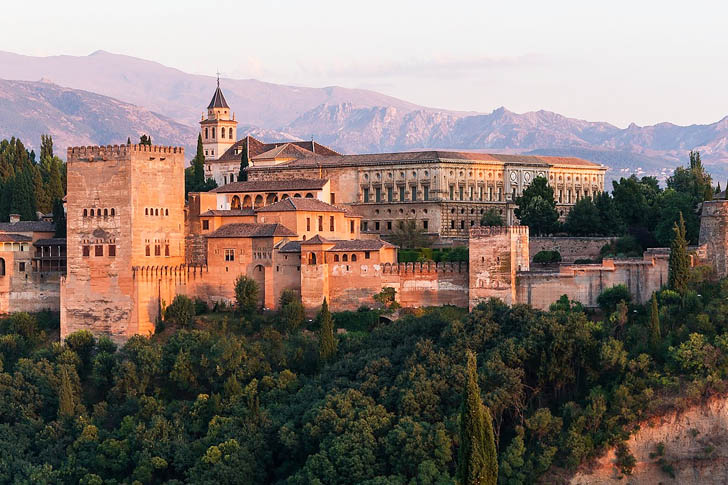
While there are many places and monuments to see in Spain, this one is worth the shift from the pre-scheduled tour. With the palace’s impressive Moorish architecture, Alhambra is a great spot to check out. It is located in the Andalusian city of Grenada and was built sometime in the mid-13th century. One of the palace’s best features is the Court of the Lions, which, to some degree, represents Paradise’s Islamic concept as its main design. The best of the Arabesque and Islamic art and architecture is the main feature of the palace’s design, adding to the magical atmosphere of the Alhambra.


